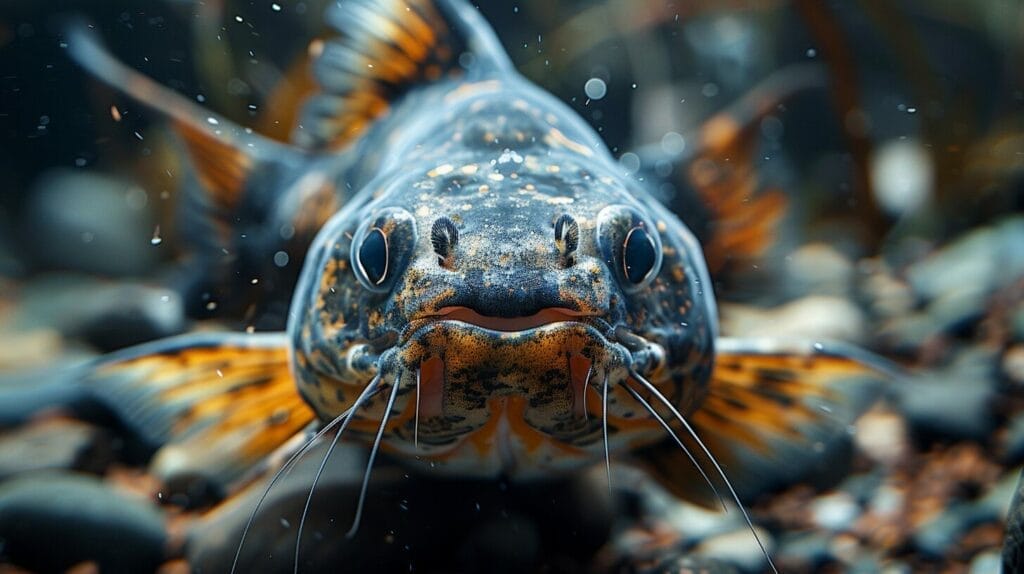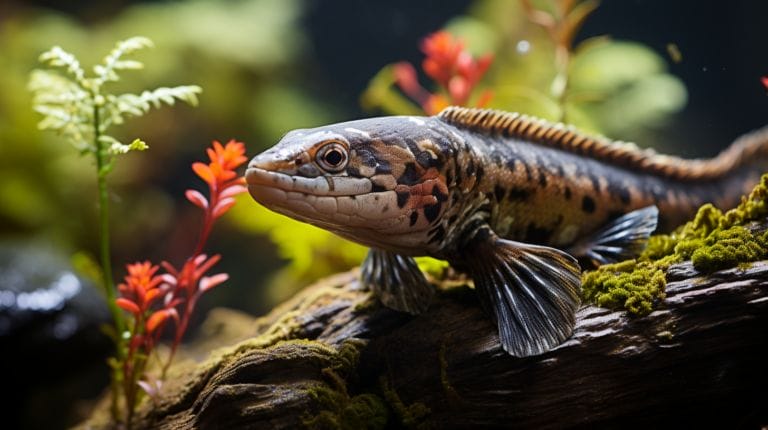Catfish With Scales: Exploring Its Fascinating Features
Dive with us into the mysterious world of catfish scales. Not merely a protective armor, these fascinating features equip catfish for survival across diverse habitats. Their tough, overlapping scales regulate water exchange and maintain internal balance, while their unique characteristics allow catfish to thrive in various environments. Their scales also play essential roles in behavior, survival strategies, and habitat navigation.
Let’s delve deeper into the significance of catfish scales in fishing, aquaculture, and conservation efforts.
Key Takeaways
- Catfish scales provide protection and aid in maintaining internal balance.
- Scales are unique, aiding in diverse habitat adaptation.
- They influence behavior, defense, and hunting strategies.
- Essential for species identification and monitoring fish health.
- Research on scales for conservation and innovative applications is ongoing.
Understanding Catfish: An Overview of the Fish Species

Catfish, primarily freshwater fish, are known for their whisker-like barbels and bony plates, or scutes, rather than scales. These scutes provide protection and support, distinguishing catfish from other fish species. Belonging to the order Siluriformes, there are over 3,000 recognized species of catfish, showcasing incredible biodiversity.
One distinctive feature of catfish is their dorsal and pectoral fins, which often have sharp, sometimes venomous spines acting as a defense mechanism. These fins are crucial for their survival in the wild, helping them navigate their habitats and ward off potential threats. The variety of shapes, sizes, and colors among catfish species highlights the richness of this group in the aquatic world.
Examining the Skin and Scales of Catfish

Upon closer examination, the skin and scales of catfish reveal unique and essential characteristics contributing to their survival in aquatic habitats. The skin of catfish is smooth and slimy, reducing friction as they move through the water. Catfish scales are tough and overlapping, forming a protective layer over their bodies, and play a vital role in regulating the exchange of water and ions.
| Aspect | Description |
|---|---|
| Physical Structure | Smooth and slimy skin, tough and overlapping scales |
| Functions | Reduce friction, provide protection, regulate water and ion exchange |
| Comparative Analysis | Catfish scales differ from other fish species, offering unique survival benefits |
Through a comparative analysis, catfish scales stand out for their robust and durable nature, compared to scales of other fish species. These features make catfish well-adapted to their environments, allowing them to thrive in various aquatic habitats.
The Role of Scales in Catfish Behavior and Habitat

After exploring the unique features of catfish scales, we find it fascinating to investigate how these scales influence catfish behavior and habitat. Catfish scales play an important role in shaping behavior and aiding in survival strategies. The scales act as a protective layer, helping catfish navigate their environment and interact with other species.
The development of scales in catfish is influenced by environmental factors such as water quality, temperature, and food availability. These factors contribute to the adaptation of catfish scales, making them evolutionary wonders that enhance the catfish’s ability to thrive in diverse environments. The scales not only provide protection but also aid in camouflage, allowing catfish to blend into their surroundings for defense and hunting purposes.
The Significance of Catfish Scales in Fishing and Aquaculture

Catfish scales serve as important indicators for species identification in both fishing and aquaculture practices. These scales play a vital role in determining the type of catfish being caught or farmed, aiding in proper management and care.
Here are three key points highlighting the significance of catfish scales in fishing and aquaculture:
- Species Identification: The unique pattern and structure of catfish scales help fishermen and aquaculturists distinguish between different species, ensuring targeted harvesting and breeding practices.
- Health Monitoring: Changes in the condition of catfish scales can indicate the overall health and well-being of the fish. Regularly inspecting scales can help identify diseases or stress factors early on, enabling prompt intervention.
- Growth Assessment: Catfish scales also provide insights into the growth rate and development of the fish. By examining the growth rings on scales, researchers and fish farmers can track the growth trajectory of individual catfish, allowing for optimized feeding and management strategies to promote healthy growth.
Are the Care Needs of Molly Fish Similar to Catfish with Scales?
When it comes to beginner molly fish care, it’s important to understand that the care needs of Molly fish and catfish with scales are not entirely similar. While both require clean water, appropriate diet and suitable tank conditions, the specific requirements for each species can vary significantly.
Conservation Issues and Future Research on Scaled Catfish

As we address conservation issues and future research related to scaled catfish, it’s important to acknowledge the pressing environmental threats and the need for scientific advancements in this field.
Conservation efforts play a pivotal role in safeguarding scaled catfish populations from the detrimental effects of overfishing and environmental challenges. By implementing sustainable fishing practices and habitat protection measures, we can guarantee the long-term survival of these unique species.
Research focusing on catfish scales is also essential for understanding their role in the ecosystem and potential applications in various industries. Scientists are continuously exploring the properties of catfish scales, such as their strength and flexibility, to develop innovative materials and technologies. This research not only contributes to the conservation of scaled catfish but also opens up new possibilities for sustainable development.
Conclusion
Overall, exploring the features of catfish with scales has been a fascinating journey.
From understanding their unique skin and scales to their importance in behavior and habitat, these fish have proven to be truly intriguing.
As we continue to study and research scaled catfish, we can also work towards conservation efforts to safeguard their populations and ensure their survival for future generations to appreciate and enjoy.
Frequently Asked Questions
What is the taxonomy of catfish with scales?
Catfish with scales belong to the class Osteichthyes, which includes all bony fish. They are part of the order Siluriformes, which consists of catfish species.
What are some notable characteristics of catfish with scales?
Catfish with scales are known for their armored bodies with bony plates called scutes. They also have whisker-like barbels around their mouths, which they use to detect prey.
How many species of catfish with scales are there?
There are many species of catfish with scales, with over 2,000 known species recognized by scientists. The majority of catfish species fall under this category.
When was the first discovery of a catfish with scales recorded?
The first recorded discovery of a catfish with scales dates back to 2007 when a new species was identified in the Amazon region.
What is the biological significance of the scales on catfish?
The scales on catfish provide protection and act as a defense mechanism against predators. They also help regulate the fish’s body temperature and maintain ecological balance.







